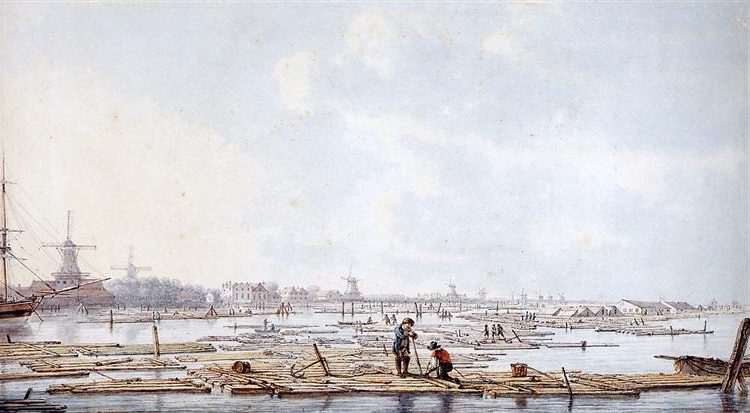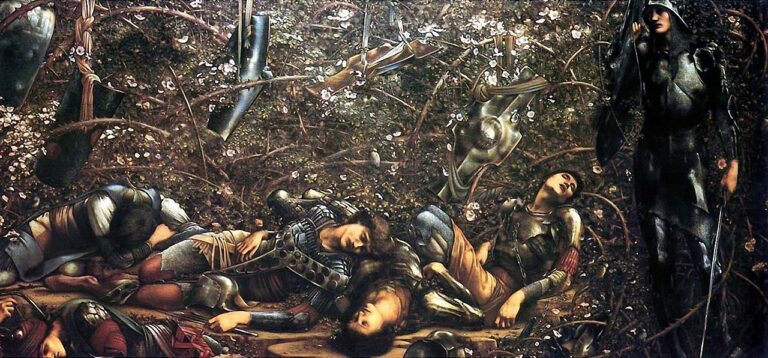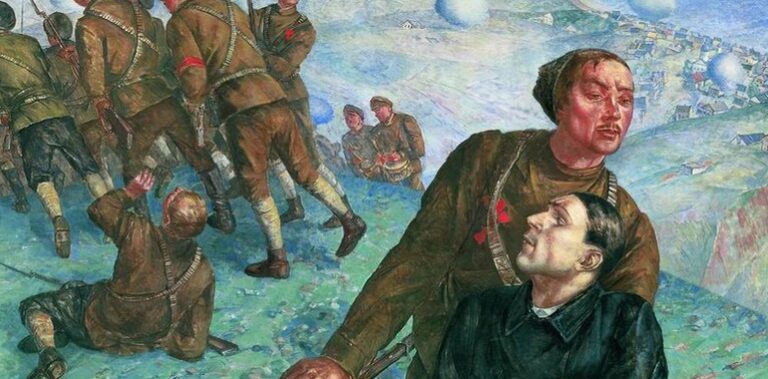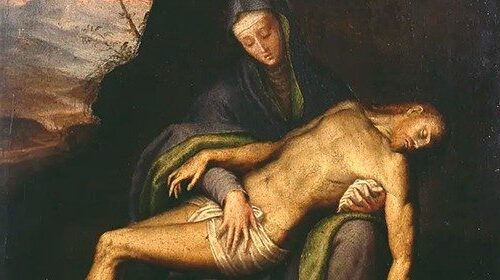Abraham van Strij: Painter of Dutch Golden Age Landscapes
Born: 31 December 1753, Dordrecht, Netherlands
Death: 7 March 1826, Dordrecht, Netherlands
Art Movement: Neoclassicism
Nationality: Dutch
Influenced By: Pieter de Hooch
Teacher: Joris Ponse
Abraham van Strij: Painter of Dutch Golden Age Landscapes
Abraham van Strij’s Life and Influence
Abraham van Strij was a prominent 18th-century painter from Dordrecht in the Northern Netherlands. He played a key role in the local art scene and made significant contributions to Dutch painting during his lifetime.
Early Life and Training
Abraham van Strij was born in Dordrecht in 1753. He came from an artistic family, as his father Leendert was also a painter. Abraham received his initial training from his father, alongside his brother Jacob.

Milking Time (c. 1810) by Abraham van Strij
After learning the basics, Abraham took lessons from Joris Ponse to further develop his skills. This education laid the foundation for his future career as a painter.
Once he completed his training, Abraham joined his father’s workshop. This experience allowed him to refine his techniques and develop his own artistic style.
Role in Dordrecht Guild of St. Luke
Abraham van Strij became a member of the Dordrecht Guild of St. Luke. This organization played a crucial role in the city’s artistic community.
As his reputation grew, van Strij took on a leadership position within the guild. He eventually became its director, helping to shape the local art scene.
Van Strij’s involvement in the guild allowed him to influence other artists and contribute to the development of painting in Dordrecht. His work often drew inspiration from 17th-century Dutch masters like Pieter de Hooch.
Throughout his career, van Strij took on many students, including his son Abraham II. This helped ensure the continuation of his artistic legacy in Dordrecht and beyond.
Notable Works and Artistic Style
Abraham van Strij created paintings that focused on everyday Dutch life in the late 18th and early 19th centuries. His works showed skill in depicting interior scenes and portraits with careful attention to light and detail.

Merriment on Frozen River by Abraham van Strij
Distinctive Themes and Techniques
Van Strij often painted domestic scenes of Dutch homes and workplaces. He was good at showing light coming through windows to create a cozy mood. His paintings had rich colors and fine details.
Van Strij liked to paint ordinary people doing everyday tasks. He showed things like cooking, sewing, and reading. His style mixed realism with a warm, gentle feeling.
The artist was skilled at painting different textures. He could make cloth, wood, and metal look very real in his art.
Major Artworks


Some of van Strij’s best-known paintings include:
- “A Cherry Vendor at the Door” – Shows a fruit seller talking to people in a doorway
- “Cottage Interior” – Depicts a simple home scene with careful lighting
- “The Drawing Lesson” – Features people looking at artwork together
- “The Caldron Scrubber” – Shows a worker cleaning a large pot
- “Old Woman Reading the Bible” – Portrays an elderly lady focused on scripture
These works highlight van Strij’s talent for capturing quiet moments of daily life.
Collaborations and Contemporaries
Van Strij worked with other Dutch artists of his time. He was part of the Dordrecht art scene.
Some artists he knew were:
- Pieter Rudolph Kleijn
- Johannes van Lexmond
- Jacob de Meijer
- Johannes Christiaan Schotel
Van Strij learned from his father Leendert and teacher Joris Ponse. He later taught his own son, also named Abraham.
The artist was active in the Dordrecht Guild of St. Luke. This group helped local painters work together and share ideas.
Legacy and Memory
Abraham van Strij left a lasting impact on Dutch art. His paintings continue to be valued for their skill and historical importance. Museums and collectors still seek out his works today.
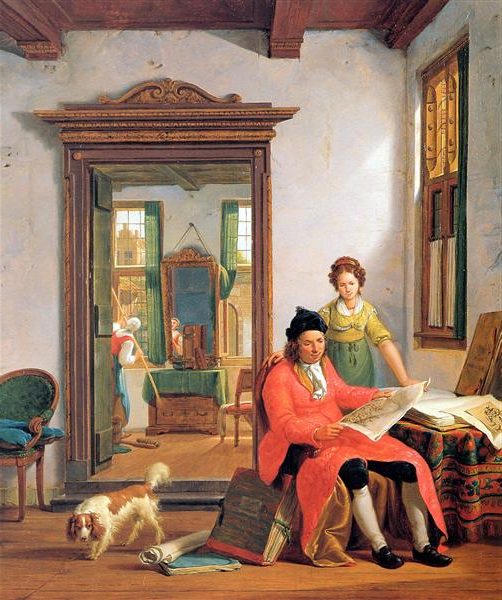
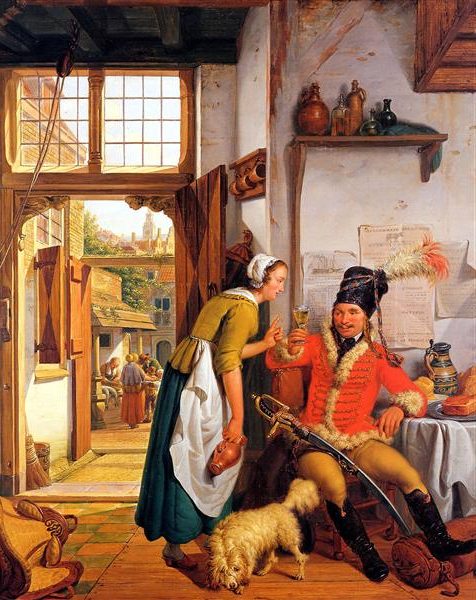
Exhibitions and Recognition
The Dordrechts Museum has featured van Strij’s paintings in several exhibitions. In 2018, they hosted a show called “Masters of Dordrecht” that highlighted his work. The RKD (Netherlands Institute for Art History) recognizes van Strij as an important 18th-century Dutch painter. They have documented his life and career in their archives.
Some of van Strij’s paintings have sold at major auction houses. In 2015, one of his interior scenes fetched over €50,000 at a sale in Amsterdam. This shows the ongoing interest in his art among collectors.
Artworks in Public Collections
Many public museums own paintings by Abraham van Strij. The Dordrechts Museum has the largest collection of his works. They display several of his genre scenes and portraits in their permanent galleries.
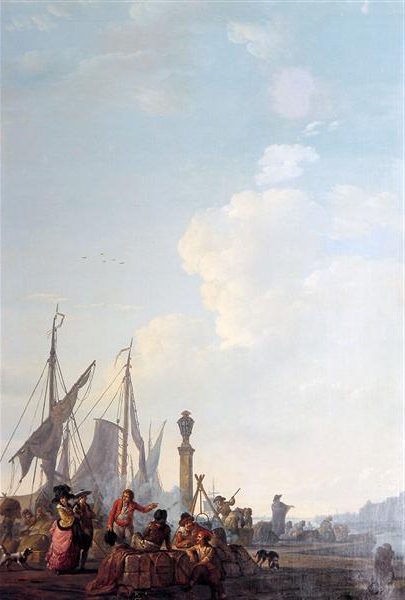
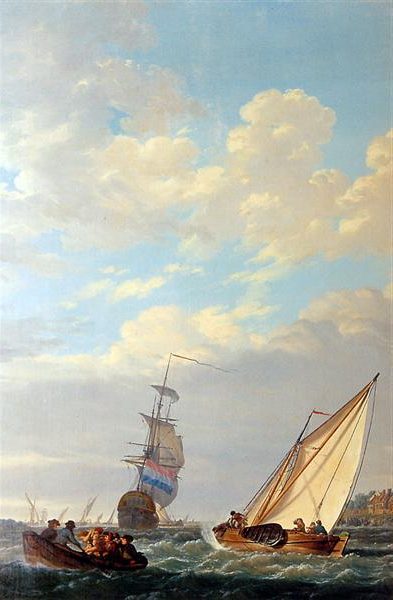
The Rijksmuseum in Amsterdam also has paintings by van Strij. These include “The Housewife” and “The Drawing Lesson.” The National Trust in the UK owns one of his works titled “A Dutch Interior.” It hangs in Dyrham Park, a historic house in Gloucestershire.
Frequently Asked Questions
Abraham van Strij was a Dutch painter who lived from 1753 to 1826. He created landscapes and genre scenes during the late 18th and early 19th centuries.
What era did Abraham van Strij belong to in the art historical context?
Abraham van Strij worked in the late Baroque and early Neoclassical periods. His career spanned the transition between these two major artistic movements in European art.
He painted during a time when Dutch art was moving away from the Golden Age style towards more modern approaches.
How did Dutch Golden Age painting influence Abraham van Strij’s work?
Van Strij drew inspiration from earlier Dutch masters. He used techniques like careful attention to light and everyday subject matter that were hallmarks of Golden Age painting.
His landscapes often featured traditional Dutch scenes with windmills and waterways, showing the lasting impact of 17th century styles.
In what ways did Abraham van Strij contribute to the landscape and genre painting styles?
Van Strij painted detailed landscapes of the Dutch countryside. He captured rural scenes with farms, animals, and people going about daily life.
His genre paintings showed ordinary people in common settings. These works gave glimpses into Dutch society and culture of the time.
What are the most notable works of Abraham van Strij and where can they be viewed?
Some of van Strij’s known works include pastoral landscapes and interior scenes. Many of his paintings are held in museums and private collections in the Netherlands.
The Dordrechts Museum in his hometown has several of his works on display. Other pieces can be found in galleries specializing in Dutch art from this period.
How do Abraham van Strij’s techniques compare to those of his contemporaries?
Van Strij used similar methods to other Dutch painters of his era. He focused on realistic details and precise brushwork.
His style was less dramatic than some Baroque artists. Van Strij aimed for natural, balanced compositions in keeping with changing tastes of the time.
What was the impact of Abraham van Strij on subsequent generations of painters?
Van Strij helped carry on Dutch painting traditions into the 19th century. His work influenced later artists who painted Dutch landscapes and scenes of daily life.
He played a role in preserving techniques and subjects from earlier Dutch art while adapting to new artistic trends.

